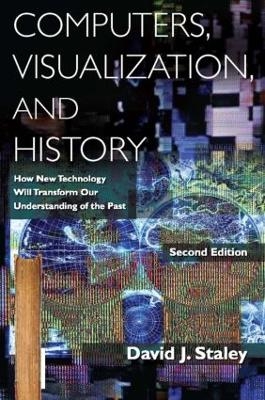
Computers, Visualization, and History
How New Technology Will Transform Our Understanding of the Past
Seiten
2013
|
2nd edition
Routledge (Verlag)
978-0-7656-3387-3 (ISBN)
Routledge (Verlag)
978-0-7656-3387-3 (ISBN)
This visionary and thoroughly accessible book examines how digital environments and virtual reality have altered the ways historians think and communicate ideas and how the new language of visualization transforms our understanding of the past. Drawing on familiar graphic models--maps, flow charts, museum displays, films--the author shows how images can often convey ideas and information more efficiently and accurately than words. With emerging digital technology, these images will become more sophisticated, manipulable, and multidimensional, and provide historians with new tools and environments to construct historical narratives. Moving beyond the traditional book based on linear narrative, digital scholarship based on visualization and hypertext will offer multiple perspectives, dimensions, and experiences that transform the ways historians work and people imagine and learn about history.
This second edition of Computers, Visualization, and History features expanded coverage of such topics as sequential narratives, 3-D modeling, simulation, and video games, as well as our theoretical understanding of space and immersive experience. The author has also added "Guidelines for Visual Composition in History" for history and social studies teachers who wish to use technology for student assignments. Also new to the second edition is a web link feature that users of the digital edition can use to enhance visualization within the text.
This second edition of Computers, Visualization, and History features expanded coverage of such topics as sequential narratives, 3-D modeling, simulation, and video games, as well as our theoretical understanding of space and immersive experience. The author has also added "Guidelines for Visual Composition in History" for history and social studies teachers who wish to use technology for student assignments. Also new to the second edition is a web link feature that users of the digital edition can use to enhance visualization within the text.
David J. Staley is Director of the Goldberg Center and Associate Professor of History at Ohio State University. He is the author of History and Future: Using Historical Thinking to Imagine the Future.
List of Figures
Preface to the Second Edition
Introduction
1. Prose and History
2. Visualization As an Alternative to Prose
3. Visual Secondary Sources
4. Virtual History
5. History Takes Shape
Conclusion
Appendix: Guidelines for Visual Composition in History
Bibliography
Index
About the Author
| Verlagsort | London |
|---|---|
| Sprache | englisch |
| Maße | 152 x 229 mm |
| Gewicht | 294 g |
| Themenwelt | Geisteswissenschaften ► Geschichte |
| Mathematik / Informatik ► Informatik ► Grafik / Design | |
| Informatik ► Web / Internet ► Web Design / Usability | |
| ISBN-10 | 0-7656-3387-6 / 0765633876 |
| ISBN-13 | 978-0-7656-3387-3 / 9780765633873 |
| Zustand | Neuware |
| Haben Sie eine Frage zum Produkt? |
Mehr entdecken
aus dem Bereich
aus dem Bereich
alles, was Sie über Gestaltung im Web wissen sollten
Buch | Softcover (2023)
Rheinwerk (Verlag)
CHF 41,85
das umfassende Handbuch
Buch | Hardcover (2023)
Rheinwerk (Verlag)
CHF 69,85


